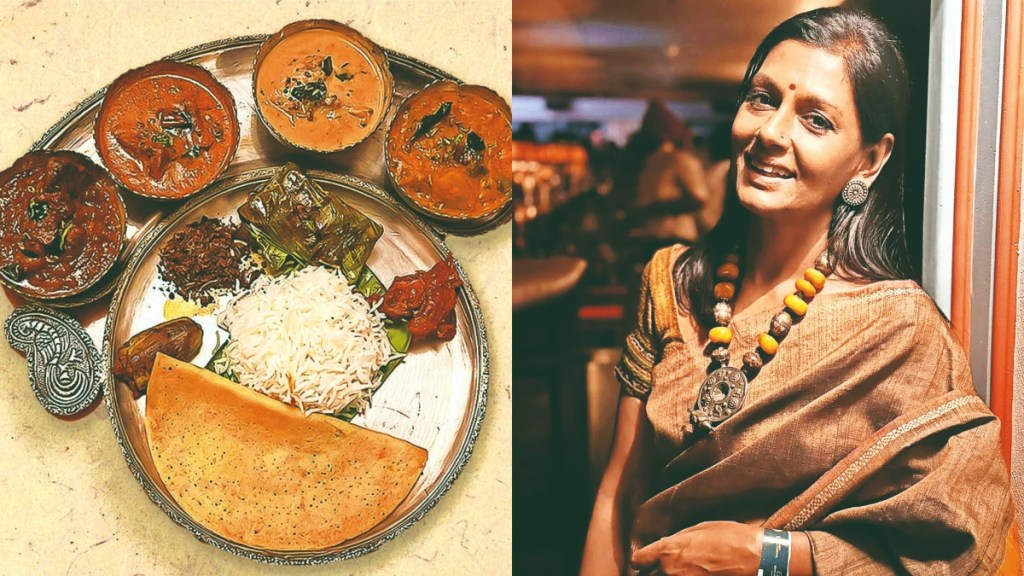How did this collaboration come about? How big a foodie are you and do you cook traditional Odia dishes?
When Rohit Khattar of Chor Bizarre invited me to curate an Odia food pop-up as part of their series on regional cuisines, I immediately said yes. It’s a cuisine of subtle flavours and simple recipes that allow the freshness of the produce and ingredients to shine through. But as it is not marketed, most people know nothing about it. So this is a small attempt to bring Odia food to Dilliwallahs. It is an exciting opportunity to share these unique flavours and introduce them to the nuances of food they would have never had.
I am a foodie and have always been fascinated by the sheer variety of flavours and ingredients that we have in our country. Odia food has many simple and flavourful dishes that take me back to my childhood holidays in Odisha.
I’ve always enjoyed experimenting in the kitchen, but mostly by guiding my cook based on tastes I have relished over the years! My father is a great cook, so I have also imbibed some of his recipes. In fact, I have included Dahi Baingan as part of the menu! My friend from Odisha, Mona Lisa Bal, is helping me and we have enjoyed creating this Odia spread.
Is traditional Odia cuisine inclined more toward seasonal vegetarian or fish and meat?
Odias largely live modest lives and are creative with whatever is available. As it is a coastal state, those near a water body make seafood in all kinds of ways. But mainly they have vegetarian preparations that include numerous kinds of saags, made in many different ways. So it’s more about the natural flavours and ingredients than drowning the dishes in masala. And it’s a real loss for those who haven’t tried the variety of delectable mithais and peethas (pancake, for lack of a better word) which are an intrinsic part of Odia cuisine.
If you were to choose one dish to symbolise Odia cuisine what would it be?
I think it would be Pakhala. It’s deeply intertwined with my childhood memories of summers spent in Baripada, my father’s hometown in Odisha. This simple dish of fermented rice is very cooling for the stomach. It is eaten by the poorest to the richest Odias. What and how many accompaniments it is served with is primarily based on what the person can afford. My grandmother would just throw vegetables like aalu, parwal, baingan, etc, into the chulha. Once grilled, with its wood fired aroma, raw mustard oil, onion, garlic and green chillies are crushed and added in. Pakhala is a true summer staple and full of health benefits. It’s a dish that evokes a sense of nostalgia and comfort. Sadly, all the names of the dishes and ingredients would be so alien to most outside of Odisha that I am not even able to describe them well enough.
In the debate of Bengali vs Odia rasgulla, where does your personal preference lie, and why?
Ah, the age-old rasgulla debate! While I genuinely appreciate both the Bengali and Odia versions of this beloved sweet, I must confess a particular fondness for the Odia rasgulla. Not because of regional affiliations, but I actually love the texture and softness of it. Also the sweetness is delicate, never overpowering the flavour of the fresh chhena. Bengali sweets have their own charm and I love their nolen guder sandesh. I think we should enjoy good food, wherever it’s from and not fight over it!
People are waking up to the health benefits of traditional dishes and the logic of eating seasonal local—which is what our culinary traditions have always been. In a sense, back to the roots. How do you see this irony of tradition becoming a hot food fad?
Earlier, we ate various millets, seasonal and local fruits and vegetables and the desserts were made of natural gud. But for economic reasons and vested interests, various things like sugar and wheat were introduced and seen as a symbol of upward mobility. But now, most people cannot afford those basic ingredients which are being produced less and less. And the markets are flooded with so many unhealthy things that have become cheaper options.
I’ve always felt that traditional diets hold so much wisdom. Sourcing ingredients locally, and eating seasonal produce connects us to the land, to the rhythms of nature, our bodies and is environmentally sustainable. And simple and slow cooking preserves the natural flavours of the food and makes it nutritious. But these have become latest food fads. It’s like we are coming full circle, returning to our roots and recognising the value of our culinary heritage but we are not making them accessible enough.
Now the privileged are eating unpolished rice, brown sugar and talking about farm-to-table produce. I am glad that in states like Odisha, they are aggressively promoting millets and making it available for larger communities. But we can truly celebrate this traditional wisdom only when we can make it affordable for a lot more people.









